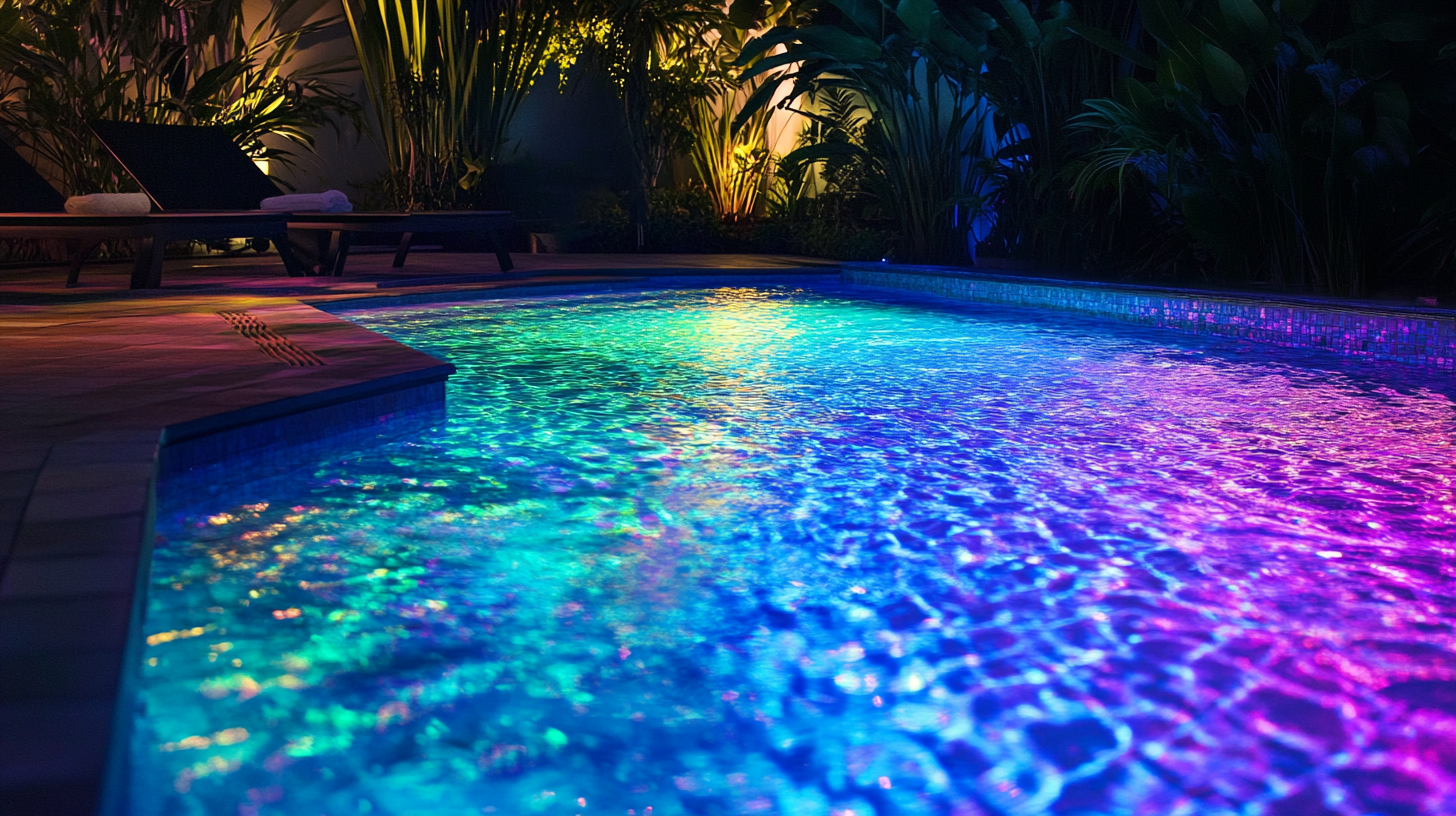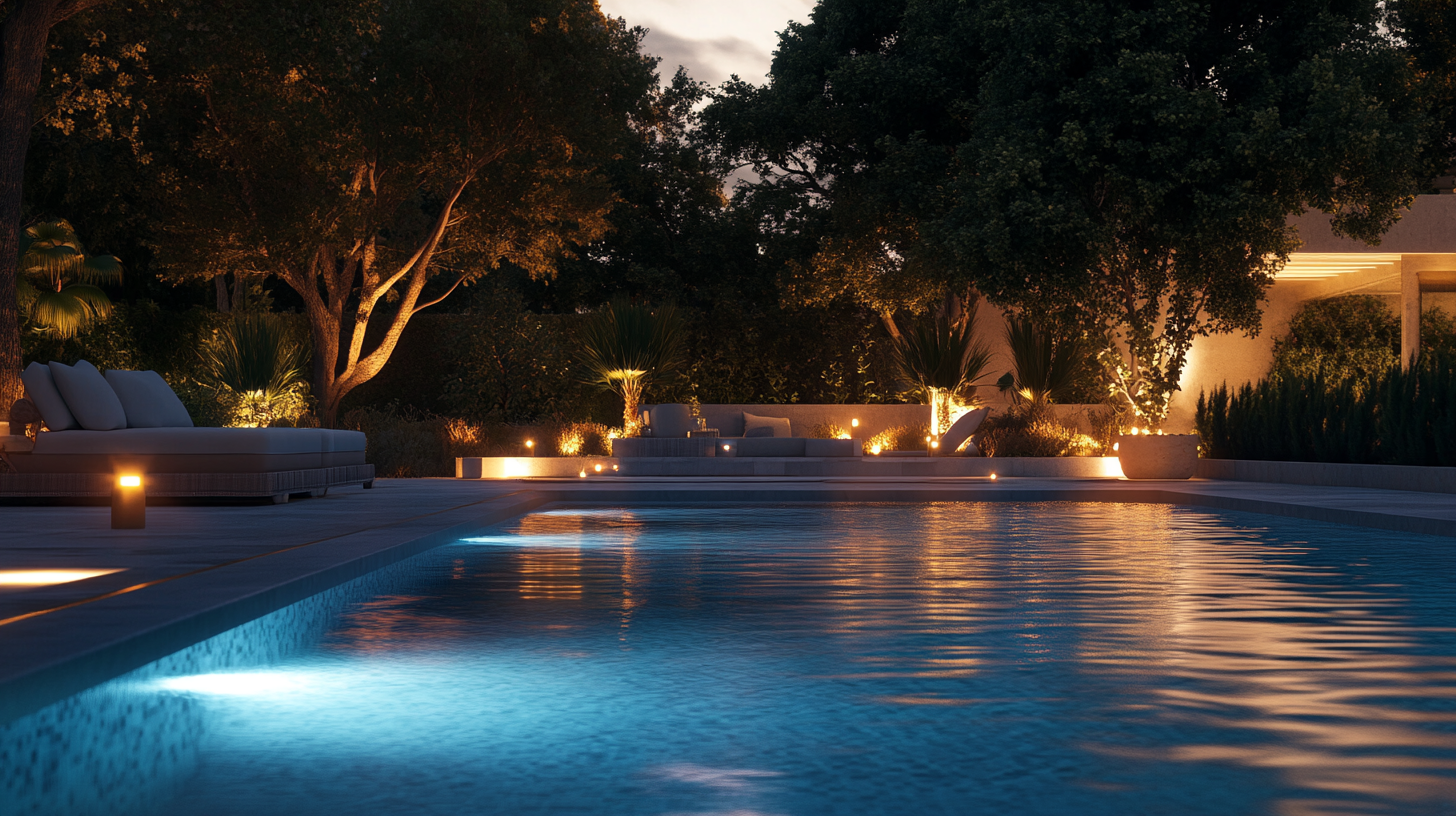How to wire underwater boat lights for maximum efficiency
When it comes to installing underwater lights on your boat, selecting the right lights is a pivotal step to ensure you’re getting the most out of your investment while maintaining maximum efficiency. With a plethora of options on the market, it can feel like navigating a sea of confusion. But fear not! By focusing on a few key factors, you can make an informed decision that enhances both safety and aesthetics for your seafaring adventures.
First, consider the brightness and color of the lights. Many sailors opt for LED underwater lights because they’re energy-efficient and provide bright illumination without draining the boat’s battery. LEDs come in an array of colors, giving you the creative freedom to cast a dramatic glow beneath the waves or a subtle, serene ambiance. Keep in mind, the color of the light can also influence marine life visibility and your diving experiences, so choose wisely.
Next, factor in the light’s beam angle and intensity. For broader illumination, especially in darker or murky waters, a wider beam angle might be ideal. This ensures that the underwater landscape gets sufficiently illuminated, enhancing safety and navigation. Some newer models even offer adjustable beam angles, allowing for versatile lighting tailored to specific conditions or personal preferences.
The material and build quality of the lights are crucial for durability. Marine environments are harsh, with saltwater and other elements contributing to wear and tear. Opt for lights crafted from robust materials like marine-grade stainless steel or bronze, which offer excellent corrosion resistance. This choice not only prolongs the lifespan of your lighting but reduces maintenance efforts over time.
Lastly, ensure the lights are compatible with your existing boat lighting system. Having a reliable wiring guide can prove indispensable as you navigate through installation details and integrations. Compatibility with your boat’s electrical system is essential to avoid power discrepancies and ensure seamless functioning. Incorporating these considerations into your selection process will set you on course for a glowing masterpiece of underwater illumination, maximizing both functionality and the wow factor.
Understanding water resistance and safety
When venturing into the depths of underwater boat lighting, understanding water resistance and safety is paramount. After all, being submerged adds a whole new layer of complexity to the simple act of flipping a switch. Water and electricity may not be best friends, but with the right precautions, you can ensure they work harmoniously to illuminate your maritime adventures.
First, it’s important to grasp the concept of an IP (Ingress Protection) rating, which is typically stamped on the packaging of underwater lights and wiring. This rating tells you exactly how resistant a product is to water and solid intrusions. For underwater lights, shoot for an IP68 rating. This means the lights are dust-tight and submersible beyond a meter. Going for anything less may lead to flickering lights and eventually, costly replacements.
One can’t stress enough the importance of sealed wiring systems when dealing with underwater installations. Your lights are only as reliable as the wiring connecting them, so using waterproof connectors and heat-shrink tubing is non-negotiable. A poorly sealed system is an invitation for water to creep in, corroding wires and causing short circuits. Applying silicone sealant to vulnerable areas adds an extra layer of protection, so don’t hesitate to go the extra mile with sealing any visible gaps.
Now, let’s talk about voltage. Using low-voltage systems (such as 12V or 24V) reduces the risk of electric shock, making them ideal for underwater applications. This is especially crucial in case there’s any accidental exposure to water. Furthermore, these systems tend to be more energy-efficient, ensuring your boat’s battery stays charged for those extended evening voyages. Plus, investing in a high-quality circuit breaker adds a fail-safe mechanism, ready to cut off power supply in the event of unforeseen issues.
Adhering to these water resistance and safety guidelines not only enhances the longevity of your underwater lights but also safeguards the overall efficiency of your boat lighting system. So while you may be yearning for those mesmerizing underwater hues, ensure you’re diving into this project with a splash of caution and a wave of preparedness.
Selecting the appropriate wiring materials
The wiring materials you select for your underwater boat lights can influence both the performance and longevity of your entire boat lighting system. Sound like a trivial detail? Think again! The right materials ensure that your lights function at their best, reducing maintenance requirements and maximizing efficiency. So, let’s dive into the essentials you need to consider for this pivotal step.
Start by focusing on the gauge of the wire. For marine environments, opting for marine-grade, tinned copper wire is a wise decision. This type of wire resists corrosion due to its protective tin coating, making it the perfect companion for saltwater conditions. Heavier gauges allow for the efficient transmission of power, minimizing voltage drop across the length of the cable—ensuring your underwater lights shine as bright as the day you installed them.
Next up is the insulation. Marine wires differ from their conventional cousins because they boast thicker, more robust insulation. Materials like PVC or cross-linked polyethylene (PEX) offer excellent durability, safeguarding against both moisture intrusion and physical damage. This layer of defense is essential because, in underwater environments, even minute flaws in insulation can lead to short circuits or power loss, hampering your quest for illuminating efficiency.
Pair your wires with top-notch connectors. Waterproof connectors, coupled with heat-shrink tubing, provide resilient seals at connection points, warding off unwanted moisture. When installing everything, ensure all connectors are fully covered and secured. Crimp connectors over soldered ones deliver unmatched vibration resistance—ideal when your ship dances on sea waves. To top it off, a simple dab of dielectric grease on these connections before sealing them will fend off corrosion, enhancing the longevity of those glitzy underwater lights.
Keep in mind, the length of your wiring should factor into every decision. Longer runs result in more resistance and contribute to higher voltage drops, underscoring the need for proper gauge assessment. For the most efficient setup, aim for direct wiring routes that minimize unnecessary twists and turns. A reliable wiring guide can assist in planning these routes, ensuring the efficient setup of your boat’s lighting system.
By carefully selecting and implementing the appropriate wiring materials, you’ll be setting the stage for a lighting installation that not only meets the standard but blazes past it with unrivaled brilliance and efficiency. So, equip your vessel with the right maritime toolkit, and let your underwater illuminations shine bright for many voyages to come.
Step-by-step installation process
Before diving into the installation process, ensure that you have all the necessary tools and materials readily available. Having a comprehensive checklist can make the difference between smooth sailing and frustrating setbacks. You’ll need marine-grade tinned copper wire, waterproof connectors, heat-shrink tubing, silicone sealant, cable ties, a wire stripper, a crimping tool, and possibly a drill if you’re mounting new fixtures. Safety gear, like gloves and protective eyewear, is also recommended.
Start the installation by identifying the ideal location for mounting your underwater lights. The placement should be strategic to maximize illumination while minimizing glare for passengers. Many boat owners prefer the transom or underside of the hull for a dramatic cascading effect, but you may choose a different location based on your specific boat design and aesthetic preferences. Once you’ve chosen your spots, ensure they are clean surfaces free from dust and debris to promote better adhesion and mounting.
Next, gather your wiring materials. Measure and cut the marine-grade tinned copper wire, ensuring you have sufficient length for your desired lighting placement with some extra slack to accommodate for adjustments. Strip the wire ends carefully, making sure not to damage the inner copper strands, as this could affect conductivity and efficiency.
Before connecting the wires, ensure your boat’s power source is turned off for safety. Use waterproof connectors to join the wires from your power source to the lights. Secure each connection with heat-shrink tubing. Apply heat evenly with a heat gun to create a watertight seal. This is crucial for maintaining the efficiency of your underwater lights and preventing corrosion. To add further protection, use silicone sealant around each connector, especially in areas more vulnerable to water exposure.
With the wiring securely in place, mount your lights. Depending on the design of your lights, you may need to drill holes for screws or use adhesive mounts. Make sure the fixtures are tightly secured to prevent them from dislodging during high-speed boating or rough waters. Once mounted, use cable ties to organize and secure the wires along the hull, keeping them neatly tucked away to avoid snags and reduce wear and tear from movement and friction.
After installation, conduct a thorough test of your boat lighting to ensure everything functions correctly. Turn on your lights and check for flickering or dimming, which could indicate loose connections or inadequate power supply. Use a multimeter if necessary, to verify that the voltage across your lights is appropriate as per their specifications. Make any adjustments needed to fix these issues.
Ensure that your installation adheres to maritime regulations and complies with all safety standards. This guarantees not only optimal performance and efficiency but also safety for everyone aboard. With careful installation and attention to detail, your underwater lighting system will enhance the aesthetics and functionality of your marine vessel, turning it into a beacon of light on water.
Tips for maintaining efficiency and longevity
To maintain the efficiency and longevity of your underwater boat lights, a little attention to detail can go a long way. Start by keeping a regular cleaning schedule. Marine environments are notorious for accumulating grime, algae, and barnacles, all of which can cloud your lights and impair their illumination. Periodically wipe down the lenses with a soft cloth and a non-abrasive cleaner to keep them clear and bright. If your boat stays in the water over extended periods, consider using an anti-fouling solution designed specifically for underwater applications to hinder marine growth.
Monitoring the electrical connections is equally important for long-term performance. Regularly inspect connectors, wires, and seals for signs of wear or corrosion. Pay special attention to the condition of the waterproof connectors and heat-shrink tubing you’ve used. Make sure they remain secure and watertight, as any breach could lead to moisture infiltration, causing shorts or even irreversible damage to your boat lighting system.
Seasonal and incidental inspections of your power source are critical for maintaining your underwater lights’ efficiency. Ensure your boat’s battery is in good health, as underwater lights can put extra demand on older, less efficient batteries. Keeping connections tight and clean will help extend both the battery’s life and your lights’ brightness. Consider using an energy-efficient battery model to support your lighting system, ensuring that each adventure is lit without unnecessary power drain.
Don’t overlook the importance of software and technology in modern boat lighting. If your lights offer Bluetooth or smart functionality for adjusting colors and brightness, routinely update their firmware to benefit from the latest features and enhancements, including improved efficiency settings or new lighting modes. This also extends to any control apps you might use; keeping them current ensures you can harness the latest technological advances to optimize your lighting system.
Finally, it’s prudent to review and maintain compliance with maritime safety standards and regulations on a regular basis. This not only ensures your boat’s lighting system is running optimally but also adheres to mandatory safety guidelines, guaranteeing that your vessel remains visible and compliant in any water navigation scenario.
By incorporating these tips and practices into your boat maintenance routine, you’ll extend your underwater lights’ lifespan, maximize their brightness, and maintain their efficiency. Your vessel will not only navigate with safety and flair but will also continue to dazzle and captivate on each voyage. Maintaining this illuminating edge requires some diligence, but the rewards—both aesthetic and functional—are well worth the effort.


